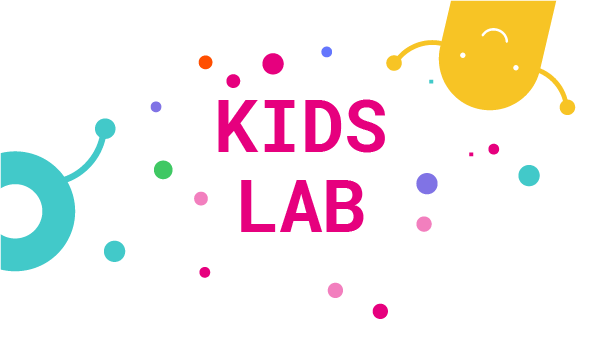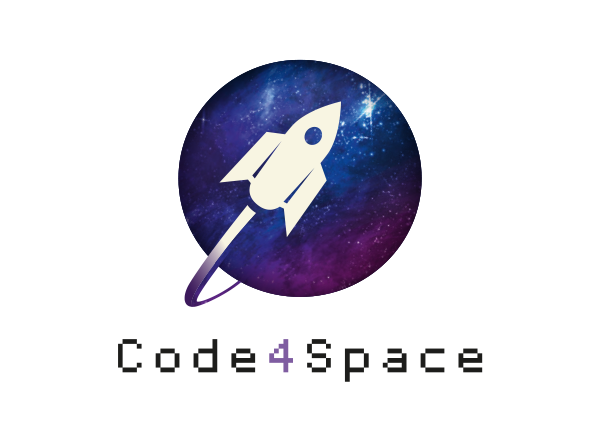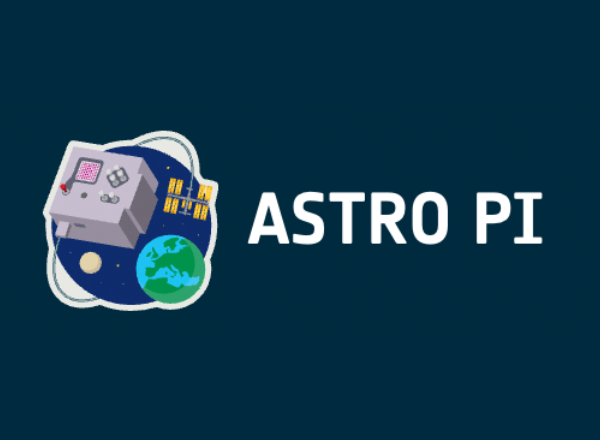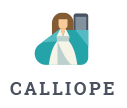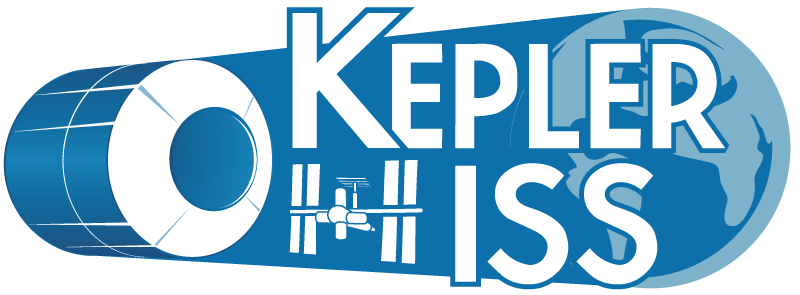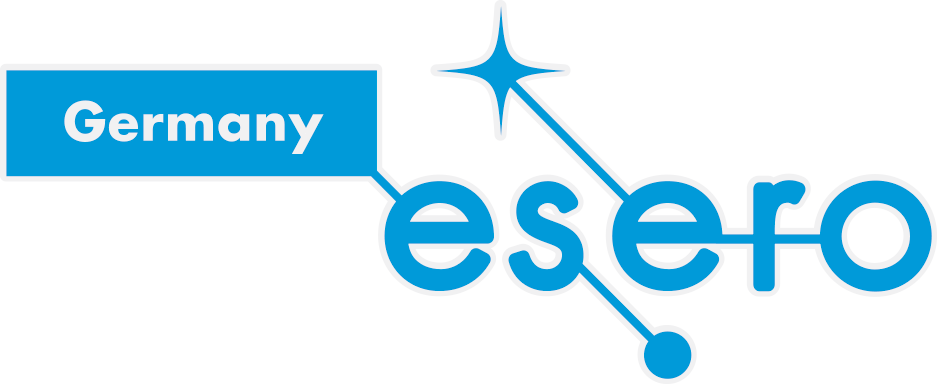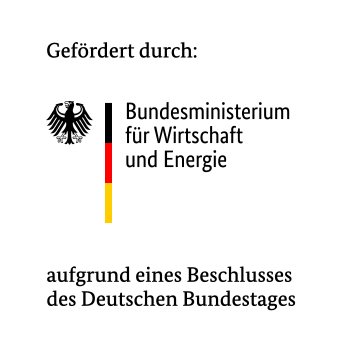CalliopEO
Calliope Earth Observation
Taking the Calliope mini to the International Space Station:
The CalliopEO campaign offers all students up to 7th grade the opportunity to let their ideas fly into space. In cooperation with the German Space Agency at the German Aerospace Center (DLR) and the Ruhr University Bochum, the children can experience life on the ISS up close and even give the astronauts something to take with them on their voyage of discovery. 👾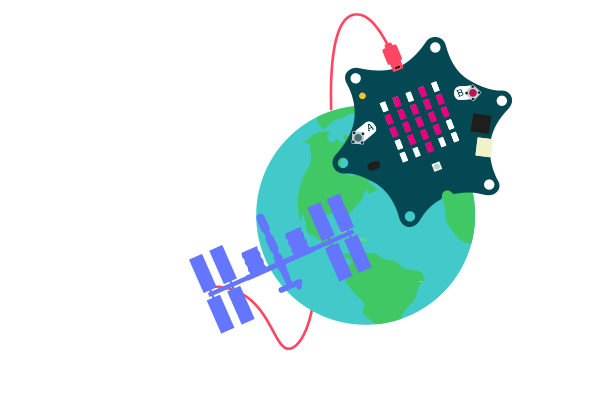
The Space Hack:
How warm is it on the International Space Station?
Do the astronauts have light up there?
In which direction is the Calliope mini pointing right now?
The students can ask these questions and many more with their self-written programs for the Calliope mini and send them to us. All codes and space hack questions will then be played on the Calliope mini in space by the astronauts on the ISS. There are no limits to creativity when creating the programs. All that is needed for a successful participation is a computer and an editor of your choice. The deadline for submitting your programs is 21.12.2021.
Participate now!

To become a true space hack professional
you need to follow these 3 steps to the ISS.
From then on, fingers crossed!
Ready, set, go!
WOW, now our Calliope mini could already gain first flight experiences and landed safely in Houston. Here, real space tests await him to check whether our Calliope mini in the spacesuit is ready to take off on his big mission. Once this hurdle has been overcome, the next stop is Kennedy Space Center Cape Canaveral in Florida.

Participate and win a space certificate!
Notes and templates for submitting your programs:
 |
||
| .HEX vertical_align_bottom |  |
.XML vertical_align_bottom |
 |
||
| .HEX vertical_align_bottom |  |
.XML vertical_align_bottom |
| .HEX vertical_align_bottom |
In order to run your experiments on the ISS, we need the code file of your programs.
- if you use the MakeCode Editor, we need the .HEX file
- if you use the Open Roberta Lab, we need the .XML file, which you can export via export.
- Describe your idea in a few sentences. If you want to be creative, you can also sketch your idea.
All information about submitting your programs so that they can run on the ISS can be found in the conditions of participation.
Send your projects to
calliopeo@calliope.cc
Your projects will be viewed and sent to the ISS.
You can find everything about the dates here.
Get ready for takeoff!
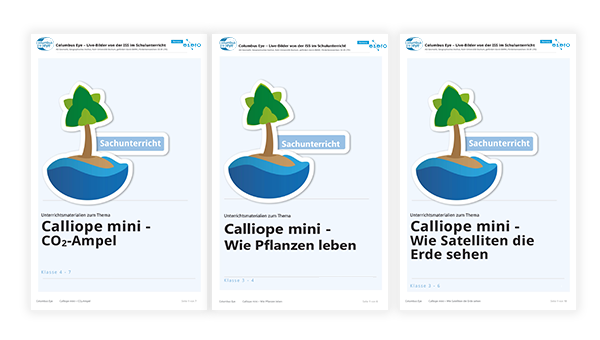
Teaching material
Here you will find three great lessons that you can use as an orientation and introduction to the Space Hack. Students can learn how plants live, how satellites see the Earth, or how to build a CO2 traffic light.
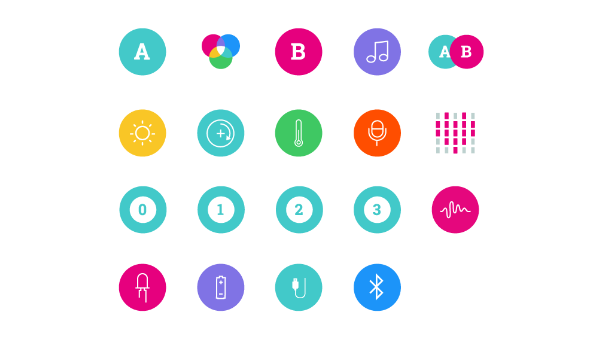
Programming basics
The Calliope mini flying to the ISS is very specially equipped and has the following input and output capabilities:
Output: LED Matrix
Input: Buttons A+B
Integrated Sensors: position, temperature, brightness, volume
External Sensors: CO2, temperature, humidity, color, sunlight
All important basics to get started with the Calliope mini can be found here.
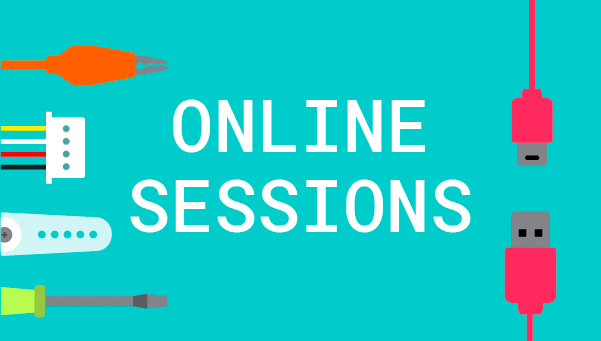
Workshop offers
Working with the Calliope mini - short basic and introductory videos, advanced training, and additional online sessions for teachers will help you become a true Calliope mini pro.
The experiments on the ISS
Are you wondering what astronauts are actually doing with the Calliope mini? How can our little microcontroller support the work on the ISS? We have listed a few experiments here that describe the investigations up there in faraway space in more detail. Perhaps this insight will also serve as inspiration for your own space hack program.

The color spectrum of the earth - Is our earth as colorful from above as shown in an atlas or on a globe?

The duration of an circumnavigation of the Earth - How long does it take for the ISS to fly past all the classrooms around the Earth once?

Acceleration of the ISS: What is the acceleration of the ISS when it is brought to its desired position once a day?

Movement of the ISS: Why is the ISS spinning? Are the astronauts and the Calliope mini upside down?

Climate station on the ISS - What are the air conditions like on the International Space Station? Can the astronauts breathe as they do on Earth?
Dates
Here you can find all important dates!
- Application phase for the programs: 09-03-2021 – 12-21-2021
- Online session for teachers: 10-20-2021 5:00pm - 6:00pm register
Special: All information on project submission - Online session for teachers: 10-26-2021 4:00pm - 5:00pm register
Topic: CalliopEO Space Hack - Science Days Digital for teachers and pedagogues: 11-02-2021 5:00pm - 6:00pm register
More information in the science days program booklet. - Online session for teachers: 11-02-2021 5:00pm - 6:00pm register
Topic: Sensors - Kids Lab for students: 11-05-2021 3:00pm - 5:00pm register
Topic: Smart light - Online session for teachers: 11-11-2021 5:00pm - 6:00pm register
Topic: Sensors - Online session for teachers: 12-02-2021 5:00pm - 6:00pm
Registration possible from 10-20-2021
Topic: CalliopEO Space Hack - Kids Lab for students: 12-03-2021 3:00pm - 5:00pm
Registration possible from 10-20-2021.
Topic: Plant station
Stay tuned!
FAQ
All students up to 7th grade who enjoy programming and especially space.
No, programming with an editor is also perfectly sufficient to participate in the Space Hack. However, a Calliope mini can help you to imagine the individual programs and ideas better.
Application phase for the starter sets of 10 Calliope mini: 09-03-2021 – 10-01-2021
Application phase for the programs: 09-03-2021 – 12-21-2021
There are many sensitive devices on the International Space Station and communication between these devices, but of course also between the space station and the base here on Earth, must never be disturbed. Because they transmit on the same frequencies, radio or Bluetooth functions cannot be used.
The results of measurements are sent back at specific, predefined times. Since this is quite a time-consuming process, the data cannot be sent synchronously with the measurement. However, as soon as we receive the data, it will be forwarded to your provided mail address.
The Calliope mini that flies to the ISS is very specially equipped and has the following input and output options and sensors:
Output: LED Matrix
Input: Buttons A+B
Integrated sensors: position, temperature, brightness, volume
External sensors: CO2, temperature, humidity, color, sunlight




